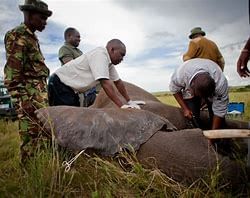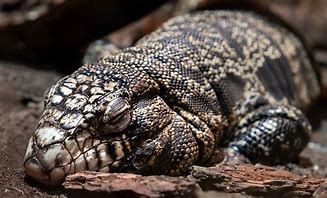UPSC Daily Current Affairs- 13th February 2024 | Current Affairs & Hindu Analysis: Daily, Weekly & Monthly PDF Download
GS-I
Hastsal Minar
Subject: History and Culture

Why in News?
In an era where heritage preservation is paramount, efforts are being made to unravel the mysteries surrounding the Hastsal Minar.
About Hastsal Minar:
- Location: It is located in a small village in western Delhi.
- Its construction was finished in 1634 during the reign of Mughal emperor Shah Jahan.
- It is also known as Mini Qutab Minar.
- Among the locals, it is also known as Hastsal Ki Laat and Kaushal Minar.
- Architecture
- It was constructed using lakhori bricks and clad with red sandstone.
- The minar is 17 metres (five storeys) tall, standing on a square platform and with an octagonal body.
- A staircase inside the five-storey tower led to the domed Chhatri pavilion at the top.
- It has three storeys, each with a reducing diameter, and is accessible through a narrow staircase
- Shah Jahan utilised Hastsal as one of his hunting lodges during the 17th century.
- Present condition:
- In 2018, the minaret was deemed as Grade A in heritage value and was given permission to be conserved under Phase IV of the Delhi government’s project to protect lesser-known monuments in the capital.
Source: Indian Express
Rising Human-Animal Conflict
Subject: Social Issues

Why in News?
Wayanad is on the boil after a wild elephant chased a 47-year-old man and trampled him to death.
Rising Human-Animal Conflict in Kerala:
- The tragedy brings to attention escalating human-animal conflict in the state.
- Increased incidence of wild animals, mainly elephants, tigers, bison, and wild boars, attacking human beings have been reported from across the state.
- Government data for 2022-23 recorded 8,873 wild animal attacks, of which, 4193 were by wild elephants, 1524 by wild boars, 193 by tigers, 244 by leopards, and 32 by bison.
- Of 98 reported deaths, 27 were due to elephant attacks.
- Beyond posing risk to humans, these attacks also devastated Kerala’s agriculture sector.
- From 2017 to 2023, there were 20,957 incidents of crop loss due to wild animal raids which also killed 1,559 domestic animals, mainly cattle.
- Wayanad Worst-affected Region:
- Wayanad, which boasts of a forest cover of 36.48 per cent, has lost 41 lives to elephant attacks and seven to tiger attacks over the last decade.
- Its geographical location plays a role in this.
Reasons Behind Rise in Human-Animal Conflict in Kerala:
- A 2018 study by Dehradun’s Wildlife Institute of India and the Periyar Tiger Conservation Foundation in Kerala found two major drivers of human-animal conflict in the state.
- Decline in Quality of Forest Habitats:
- Largely due to the cultivation of alien plants — mainly acacia, mangium and eucalyptus — in forest tracts for commercial purposes.
- With 30,000 hectares of forest land in Kerala being used for cultivation of these species, animals are deprived of their natural habitat and food sources.
- Moreover, these water-guzzling species also strain the forest’s natural water resources.
- Elephants are among the worst-affected species due to this. Invasive species such as lantana, mikania and senna, planted by forest department over decades, have also hindered growth of natural vegetation in forests.
- Changing Agri-practices:
- The study also found that changing agri-practices were also responsible for drawing animals, which do not find enough fodder in their habitats, out of forests.
- In recent years, owing to poor returns and high wage costs, more and more farmland is being left unattended.
- This makes them ideal targets for wildlife looking to snack on bananas and pineapples, among the most cultivated crops in the region.
- Moreover, the increase in wildlife attacks has further pushed people to safer settlements away from their farms.
- This further entices animals to raid estates neighboring forests.
- The crisis in Kerala’s farm sector has also driven many towards animal husbandry.
- In Wayanad particularly, the dairy sector has emerged as a lifeline for villagers.
- But domesticated animals are also prime targets for tigers and other carnivores, especially older animals less capable of hunting in the wild.
- Apart from declining quality of forests and changing agri-practices, following human activities also contribute to increasing animal-human conflict in Kerala:
- Waste disposal near forested areas,
- Fragmentation of animal habitats due to wanton construction, and
- Increased human presence in and around animal habitat
How is Kerala Addressing This Issue?
- The state has several schemes meant to prevent animals from entering human settlements.
- These include schemes for the construction of elephant-proof trenches, elephant-proof stone walls, and solar powered electric fencing.
- In 2022-23, the state conducted maintenance of 158.4 km of elephant-proof trenches, and constructed 42.6 km of solar fencing and 237 m of compound walls.
- To keep animals in forests, Kerala has also undertaken eco-restoration programmes.
- The state is also running a scheme to acquire land from farmers, to be then converted into forestland.
- However, these measures are far away from addressing the crisis.
What Are Elephant Corridors?
- Elephant corridors are linear, narrow, natural habitat linkages that allow elephants to move between secure habitats without being disturbed by humans.
- Elephant corridors are also critical for other wildlife including India’s endangered National Animal, the Royal Bengal tiger (Panthera Tigris).
Elephant Corridors in India:
- Number of elephant corridors in India have been changing over the years.
- 88 corridors were identified jointly by the Ministry of Environment, Forests and Climate Change and Wildlife Trust of India (WTI), and published in 2005.
- Wildlife Trust of India is an Indian NGO committed to nature conservation.
- In 2015, a second round of identification took place — and when published two years later, the number of corridors had gone up to 101.
- The number of corridors increased because of fragmentation of existing corridors.
- As per the Elephant Corridors of India, 2023 Report, there is a surge of 62 new corridors, marking a 40% increase since 2010, now totalling 150 corridors across the nation.
- West Bengal has the highest number of elephant corridors, totalling 26.
Source: Deccan Herald
GS-II
States do not violate Constitution in appointment of Deputy CM: Supreme Court
Subject: Polity and Governance

Why in News?
The Supreme Court recently dismissed a petition challenging the appointment of Deputy Chief Ministers in States, stating that the position does not breach the Constitution.
- Despite lacking constitutional backing, Deputy CM play significant roles in state governments, raising questions about their powers, significance, and concerns.
What is the Deputy CM Position?
- Constitutional Status: Unlike the Vice President of India, the Deputy CM post is political rather than constitutional.
- Origin: The post traces back to the Deputy PM position established in 1947 post-independence, leading to the evolution of Deputy CM roles in states.
- Appointment and Tenure: Deputy CMs are appointed and removed at the discretion of the Chief Minister, who may appoint multiple Deputy CMs.
- Historical Context: Anugrah Narayan Sinha of Bihar was the first Deputy CM post-Independence, with 12 states in India having Deputy CMs as of July 2023.
Powers and Responsibilities
- Rank and Pay: Deputy CMs hold a rank equivalent to cabinet ministers, receiving similar pays and perks.
- Portfolio Allocation: They are entrusted with portfolios, although typically smaller in scale compared to the Chief Minister.
- Financial Powers: Deputy CMs hold no specific financial authority, requiring approval from the Chief Minister for expenditures exceeding allocated budgets.
- Administrative Role: They facilitate governance and administration, acting as a bridge between the ruling party and its allies.
Significance of Deputy CMs
- Political Stability: Deputy CMs contribute to coalition government stability by bridging gaps between ruling parties and allies, reducing incidents of anti-defection.
- Representation and Trust: Their presence ensures better representation of communities, fostering public trust in governance.
- Succession and Accountability: Deputy CMs serve as potential successors to the Chief Minister, promoting transparency and accountability in government.
Concerns and Suggestions
- Lack of Constitutional Backing: Raises concerns about role ambiguity and potential exploitation by Chief Ministers.
- Multiplicity of Appointments: No limit on the number of Deputy CMs can lead to appeasement and governance complexities.
- Complexity in Governance: Overlapping roles with cabinet ministers may complicate governance and administration.
Future Perspectives
- Clarity and Limitations: Need for a defined role and limitations for Deputy CMs to simplify governance structures.
- Political Literacy: Enhancing awareness among citizens about the role and function of Deputy CMs is essential for informed governance.
Source: The Hindu
GS-III
The Great Indian Bustard (GIB)
Subject: Environment and Ecology

Why in News?
The Great Indian Bustard (GIB) has not put in its annual appearance this year also at the Rollapadu Wildlife Sanctuary in Andhra Pradesh.
Background:-
- The forest officials in Andhra Pradesh have been conducting surveys regularly and couldn’t find the bird in the last two years in the State.
About Great Indian Bustard:-
- Critical Endangerment: The Great Indian Bustard (GIB) is critically endangered, with fewer than 140 individuals remaining globally.
- Habitat Concentration: The majority of GIBs are found in Rajasthan and Gujarat, though small populations exist in Maharashtra, Karnataka, and Andhra Pradesh.
- Conservation Efforts: Rajasthan has designated the GIB as the state bird and established chick-rearing centers to aid in conservation. Sorsan in Rajasthan is identified as an ideal site due to its favorable conditions.
- Ecosystem Role: GIBs are considered a flagship species for grasslands, with their presence crucial for maintaining the health of these ecosystems. This impact extends to other bird and animal species, as well as the dairy industry.
- Agricultural Expansion and Urbanization resulting in habitat loss and fragmentation.
- Increased human activities such as grazing and disturbance due to tourism can disrupt the natural behavior of the bustards, affecting their breeding and feeding activities.
- Poaching remains a threat to the Great Indian Bustard. Despite legal protection, they are sometimes targeted for their meat and feathers.
- The birds are at risk of colliding with overhead power lines, especially in the semi-arid landscapes where they are found. This can lead to fatalities and population decline.
- Climate change can impact the availability of suitable habitats and affect the availability of prey species, indirectly influencing the bustard population.
- Low Reproductive Success:Disturbances during the nesting season can lead to low reproductive success, as the birds may abandon nests or be unable to raise chicks successfully.GIBs are slow-reproducing, laying just a few eggs, and having almost a year-long parental care of chicks.
- Limited Genetic Diversity:The small and isolated populations of the Great Indian Bustard may lead to reduced genetic diversity, making them more vulnerable to diseases and environmental changes.
Source: The Hindu
Brumation
Subject: Science and Technology

Why in News?
Typically observed during cold months, its a process similar to hibernation.
Background:
- Researchers have observed instances of brumation in various reptilian species across habitats.
About Brumation:
- It is the name to describe a period of dormancy or slowed activity in reptiles, much like hibernation in mammals.
- It typically occurs during colder months, when temperatures drop and food becomes scarce.
- Reptiles enter a state of brumation to conserve energy and survive these adverse environmental conditions.
- During brumation, reptiles may retreat to underground burrows, rock crevices or other sheltered areas where temperatures are relatively more stable.
- Metabolism slows significantly, allowing them to go weeks or even months without eating.
- This period of reduced activity allows reptiles to conserve energy and minimise their resource requirements.
- Species which exhibit brumation include box turtles and painted turtles, which burrow into the mud at the bottom of ponds or lakes. Snakes may seek refuge in underground dens or caves while lizards may hide under rocks or within vegetation.
Source: The Hindu
Conference of the Parties (COP28) of the UNFCCC
Subject: Environment and Ecology

Why in News?
28th Conference of the Parties (COP28) of the UNFCCC, was held in Dubai, UAE.
Background:
- The summit followed a year of extreme weather events in which many climate records were broken.
About COP:
- COPs are gatherings held within the framework of theUnited Nations Framework Convention on Climate Change (UNFCCC), a multinational treaty established in
- During these sessions, participating countries (Parties) evaluate global endeavors aligned with the primary goal of theParis Agreement, aiming to restrict global warming to approximately 1.5 °C above pre-industrial levels.
- COP 28 marked the 18th session of the Conference of the Parties to the Kyoto Protocol (CMP 18) and the 5th session of the Conference of the Parties to the Paris Agreement (CMA 5). It also adopted a final document called the UAE Consensus.
Major outcomes/highlights of the COP 28:
- COP28 calls for transitioning away from fossil fuels in energy systems, in a just, orderly, and equitable manner, accelerating action in this critical decade, to achieve net zero by 2050.
- The Global Cooling Pledge for COP 28 includes 66 national government signatories committed to working together to reduce cooling-related emissions across all sectors by at least 68% globally relative to 2022 levels by 2050.
- Declaration to Triple Nuclear Energy launched at COP28 aims to triple global nuclear energy capacity by 2050.
- Member countries reached an agreement to operationalize the Loss and Damage (L&D) fund aimed at compensating countries grappling with climate change impacts.
- Global Renewables and Energy Efficiency Pledge stipulates that signatories commit to work together to triple the world’s installed renewable energy generation capacity to at least 11,000 GW by 2030. It also calls for collectively doubling the global average annual rate of energy efficiency improvements from around 2% to over 4% every year until 2030.
Source: The Lancent
Fire Capped Tit
Subject: Environment and Ecology

Why in News?
Recently, Birders have spotted the trail of species flying back home including the fire-capped tit in the Aravalli hill region suggesting reverse migration as the season changes from winter to summer
About Fire Capped Tit:
- It is a small bird species assigned to the family Paridae.
- Migration pattern: It is a Himalayan bird which flies down south towards Western Ghats and Kerala around Sept, and is back around Feb-end and March.
- Habitat: Inhabits forest feeding on invertebrates, nectar and pollen, usually high in the canopy but will descend to low growth.
- It is found in montane broadleaf forests at middle to high elevations, sometimes mixed in with other species.
- These birds breed in the Himalayas during summer and have a melodious song.
- Distribution:
- A local breeding summer visitor to northern mountains from Pakistan east to Arunachal Pradesh.
- Winters in foothills and rarely in plains south to Maharashtra and Madhya Pradesh.
- Conservation status
- IUCN: Least Concern
Why early reverse migration?
- The winters were not very harsh in central India. So, the bird could have started moving early.
Source: The Times of India
SWATI (Science for Women-A Technology & Innovation) Portal
Subject: Science and Technology

Why in News?
The “Science for Women-A Technology & Innovation (SWATI)” Portal was recently launched by the Principal Scientific Advisor to the Government of India.
About SWATI Portal
- Objective: Designed to be a comprehensive online platform, SWATI aims to showcase the contributions of Indian women and girls in Science, Technology, Engineering, Mathematics, and Medicine (STEMM).
- Single portal: SWATI serves as a single online portal representing Indian women and girls in STEMM fields.
- Database: It hosts a database that will aid in policy-making to address gender-gap challenges in STEMM.
- Interactive Platform: SWATI offers an interactive database, a pioneering initiative in India, developed, hosted, and maintained by the National Institute of Plant Genome Research (NIPGR), New Delhi.
- Faculty: Featuring faculty members from Indian universities, autonomous organizations, and key ministries such as the Ministry of Science and Technology, CSIR, DBT, DST, MHRD, UGC, GATI, and KIRAN.
Objectives
- Scaling Efforts: The portal seeks to exponentially scale up efforts to include every Indian woman in science (WiS), covering all career stages and subjects in both academia and industry.
- Research Facilitation: By enabling reliable and statistically significant long-term research on equality, diversity, and inclusivity issues in India, SWATI aims to develop an active search engine and searchable database.
Source: The Hindu
|
63 videos|5397 docs|1142 tests
|
FAQs on UPSC Daily Current Affairs- 13th February 2024 - Current Affairs & Hindu Analysis: Daily, Weekly & Monthly
| 1. What is the Hastsal Minar? |  |
| 2. What is the rising human-animal conflict? |  |
| 3. Does the appointment of a Deputy CM by states violate the Constitution? |  |
| 4. What is the Great Indian Bustard (GIB)? |  |
| 5. What is brumation? |  |
















